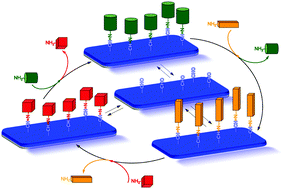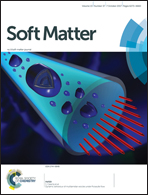Surface immobilized azomethine for multiple component exchange†
Abstract
Diazonium chemistry concomitant with in situ electrochemical reduction was used to graft an aryl aldehyde to indium-tin oxide (ITO) coated glass substrates. This served as an anchor for preparing electroactive azomethines that were covalently bonded to the transparent electrode. The immobilized azomethines could undergo multiple step-wise component exchanges with different arylamines. The write–erase–write sequences were electrochemically confirmed. The azomethines could also be reversibly hydrolyzed. This was exploited for multiple azomethine-hydrolysis cycles resulting in discrete electroactive immobilized azomethines. The erase–rewrite sequences were also electrochemically confirmed.



 Please wait while we load your content...
Please wait while we load your content...